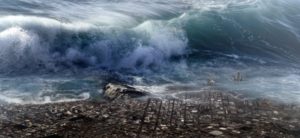

Strange Sounds – February 1, 2021
In the last few years, the Cumbre Vieja volcano in La Palma / Canary Islands was hit by several earthquake swarms. The first major series occurred in October 2017. It was followed by another seismic event in February 2018 and five in 2020, the latest end of December 2020.
Meanwhile, a new seismic unrest has started beneath the volcanic peak since January 31, 2021. The magnitudes of the earthquakes are between 1,2 and 2,5 (MbLg) and their depths range between 10 and 29 km right under the western slope of the Cumbre Vieja volcano.
Although this new seismic swarm poses no danger to residents and visitors to La Palma given the low magnitude and depth of the earthquakes, it clearly shows that something is going on there.
Cumbre Vieja has erupted twice in the last 70 years, first in 1949 and then again in 1971. Taking those 22 years between each eruption as indicator, it means the volcano is about 25 years overdue for its next eruption.
There also have been thousands of tremors recorded near or beneath the Spanish volcano in the past couple of years, suggesting it could blow anytime.
Moreover, we went from 1 seismic crisis in 2017 and 2018 to 5 unsettling swarms in 2020. That’s a dramatic increase in activity!
There are concerns that if Cumbre Vieja blows, the massive slab of rock could smash into the Atlantic Ocean causing a killer tidal wave.
This gigantic tsunami could travel thousands of miles and wash out coastal areas of Britain and even parts of the eastern seaboard of America.

